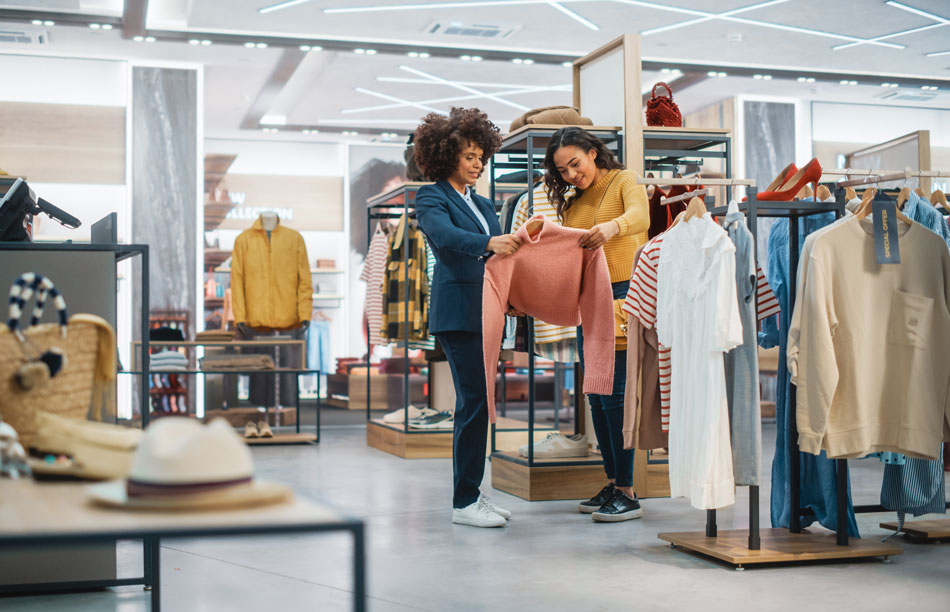Let’s break down a concept that’s shaking up shopping: the phygital retail experience.
“Phygital,” an oh-so-clever mashup of “physical” and “digital,” refers to the blending of online and in-store shopping experiences. It’s an approach to the omnichannel retail daydream turbocharged by current and emerging technologies, like AI and AR. The goal of phygital retail is to integrate these elements and create a more on-brand, engaging, and personalized shopping experience that meets today’s consumer expectations of convenience, connection, and surprise.
What Led to the Phygital Retail Revolution?
Make no mistake: Online shopping is still the go-to choice for many. More than 2 billion people purchase items online, and over the past five years, online shoppers increased by 40% globally. By 2025, retail experts estimate that there will be 285 million digital buyers in the United States.
However, we are seeing consumer desire for hyper-personalization in retail only getting stronger, while at the same time, the thirst for in-person shopping has returned. McKinsey research shows that 71% of consumers want personalized interactions. When shopping experiences lack personalization, 76% of customers say they get frustrated.
Additionally, hybrid shopping has become the new norm. A study of 1,200 Gen Z shoppers found that they were most likely to research a product online before an in-person shopping experience. According to IBM’s Consumers Want It All study, more than 1 in 4 consumers say hybrid shopping is their primary buying method. That number could grow if more shopping experiences include personalization opportunities. According to BigCommerce, 35% of people say they would shop online more if they could try on a product before purchasing it.
Phygital retail experiences are the logical next step to bridge the gap between physical and online shopping, providing opportunities for personalization, convenience, and delight. It’s no surprise then that major retailers are investing heavily in personalized solutions that integrate digital components into the shopper’s journey to capitalize on evolving consumer preferences.

Shifting Back to Physical Retail
Despite a strong online retail outlook, in-person shopping has experienced a resurgence. After Covid restrictions were lifted, many consumers were drawn back to the benefits like instant gratification, full-sensory experiences, and social aspects. Experts predicted that this year, nearly 72% of retail sales will occur in brick-and-mortar locations. Yet consumers have far different expectations about what shopping should look like today.
More consumers expect an omni-channel experience tailored to their individual interests, and retailers are responding. A whopping 72% of consumers expect businesses to see them as individuals, and almost as many (71%) expect businesses to offer personalized experiences.
Seamless Digital and Human Interactions
Modern customers crave the convenience that comes with digital solutions, yet don’t want to give up the physical experiences that come with shopping in-person. Here are a few ways retailers are embracing the phygital approach:
Sephora’s Virtual Artist app allows users to try on makeup by scanning a consumer’s face—detecting eyes, lips, and cheeks for product placement. The company’s proprietary Color IQ technology also scans a customer’s skin and assigns it a specific Color IQ number. That number corresponds to a variety of cosmetics that suit that person’s features, allowing Sephora to make personalized recommendations. The virtual artist app is one of the latest examples of how companies are building a bridge between digital and human interactions to offer the best of both worlds.
A magic wardrobe used to be something you’d only find in fictional children’s books, but at Reformation stores, customers can use iPads to choose items they want to try on. Touchscreen monitors on the retail floor allow customers to choose items they want to try on in their size and preference color. As staff members begin collecting these items and move them to the “magic” changing room with customizable lighting, customers can continue to browse.
If a clothing piece doesn’t fit, there’s no need to exit to retrieve a new size. Customers can simply click the iPad screen with a new request. This example not only offers a better shopping experience for customers, but also provides the business with customer insights and allows them to more accurately forecast inventory needs. Gap is also experimenting with a similar concept in select stores.
@wamyy5 The COOLEST dressing room ever omg 😍 #reformation @reformation #clothes #fashion #style #tryon #dresses #reformationdress #ootd #outfit
♬ original sound - Amy
Foot Locker’s community-centric Power Store concept features interactive digital displays and areas for personalized shoe customization. Shoppers can design their own sneakers digitally and then they are produced on-site. These larger-than-usual Foor Locker stores are in areas with a strong sneaker culture and host events like live music, workshops, and business development programs.
Major fashion brands like Chanel, UGG, Tommy Hilfiger, and Uniqlo have all employed AR mirrors in their stores, some for special promotions, like Coach’s month-long Tabby bag campaign. According to AR mirror maker ZERO10, 98 percent people had a positive interaction with the mirror and 18% of passersby interacted with the AR storefront outside of store operating hours during the Coach campaign.
Phygital Experience and Consumer Value
Investing in a phygital retail approach is a strategic move that can pay dividends in the long run. In fact, research shows that shoppers are remarkably willing to pay 20% more for products they can engage with in 3D environments.
Consumers place immense value on immersive and personalized experiences, signaling a compelling incentive for companies to embrace and invest in phygital retail strategies that bridge the gap between the digital and physical realms.
Retail isn’t the only industry experiencing an experiential boom. Read more about experiential and active leisure trends.





